Most of our volunteers are biology students from Central Michigan University and other universities. We also have a network of volunteers in various parts of Michigan who transport injured and orphaned hawks and owls to our facility. These volunteers range from retired individuals to those who have five day a week work schedules. Although they sometimes rescue birds (capture and contain), many volunteers simply transport the bird. We do have training sessions for anyone who might be asked to handle a bird of prey for Wildlife Recovery Association.
Volunteers are often working on maintenance of the facility: cage cleaning painting, nest box building, and other construction. Because our rehabilitation program is a very “hands off” approach in order to keep wild birds wild, there is very little contact with volunteers and birds in rehabilitation until a birds is to be released. Volunteers do, however, become well educated in our system of rehabilitation of wild animals, and most develop a deep understanding of the needs of a wild animal in captivity.
The ambassador birds, those used in educational programs, need constant care. They must routinely have their talons trimmed, beaks filed; these birds need a close association with people in order to be prepared for audiences. This is an area in which volunteers can spend many hours working directly with hawks and owls. Volunteers also assist with educational presentations, and at times can participate in research and management.
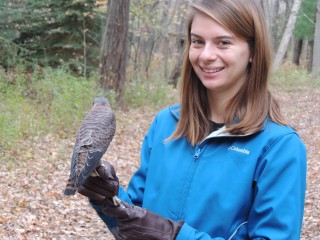
Volunteers from Central Michigan University get a chance to work directly with the birds. Kylie is working with Penny, an American Kestrel.
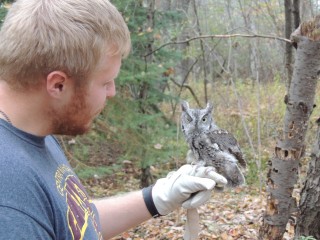
The ambassador birds need to be handled outside of programs and know that this can be a pleasant experience. Here, Sparkle works with Ryan, a CMU biology student.
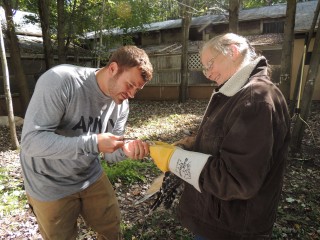
Glenn, a non-traditional CMU student, gets a chance to work directly with the ambassador birds, trimming talons.
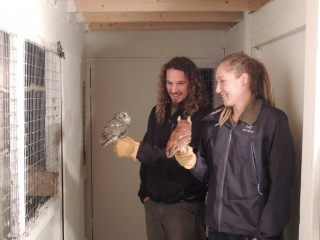
Kristy, a former CMU/Wildlife Recovery Association intern, stops by with her friend John, during a tour of National Parks around the country.
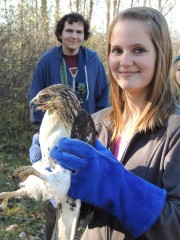
The opportunity to release a beautifully conditioned hawk or owl that is ready to return to its wild home, is reward enough for those who volunteer to set up programs and organize groups of volunteers.
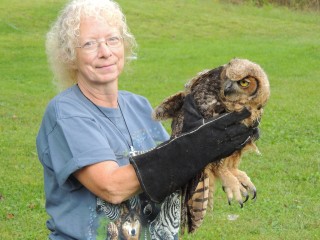
Paula, who often transports birds to the Wildlife Recovery Association sanctuary gets a chance to release a fledgling great horned owl back on territory.